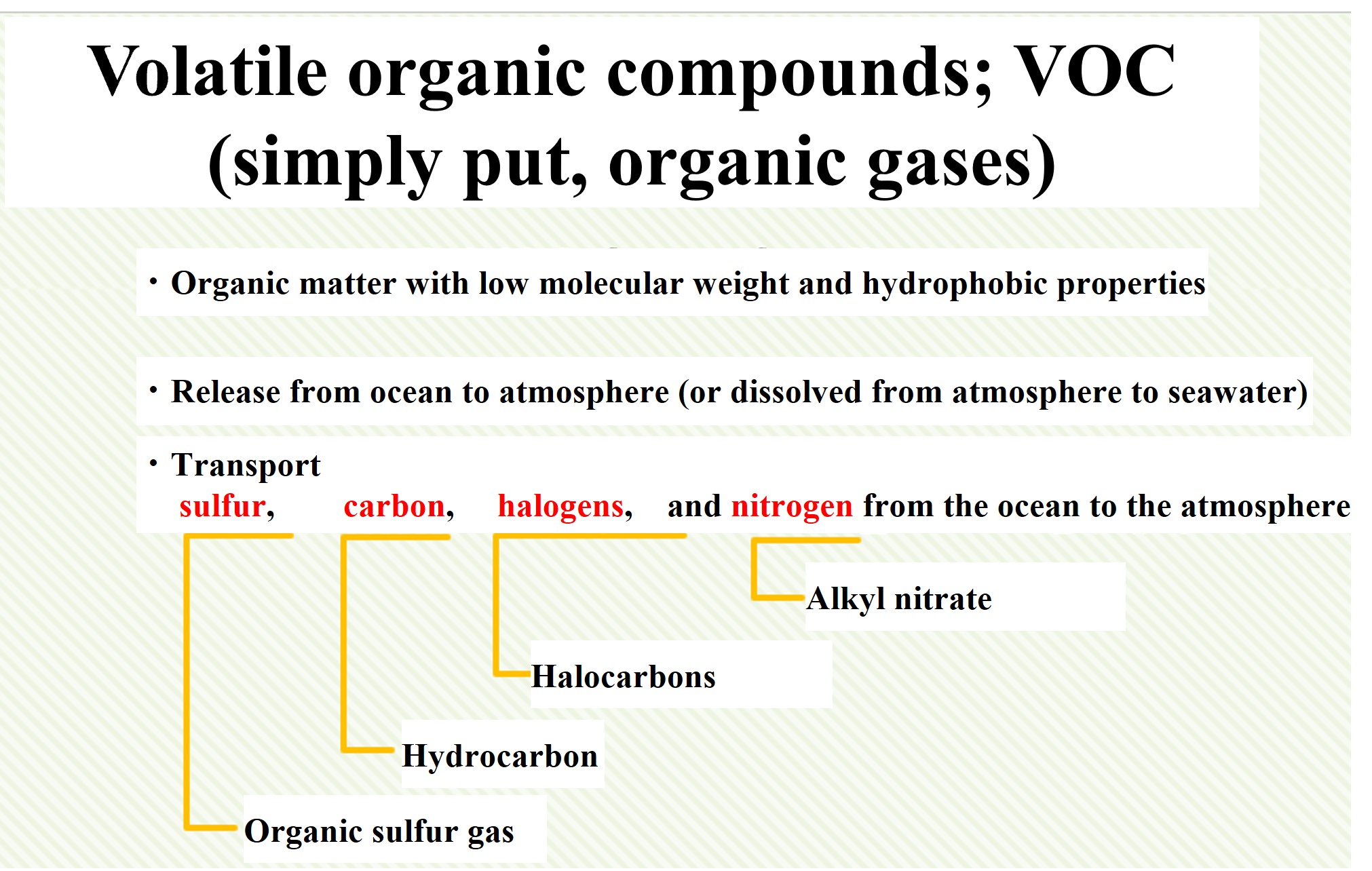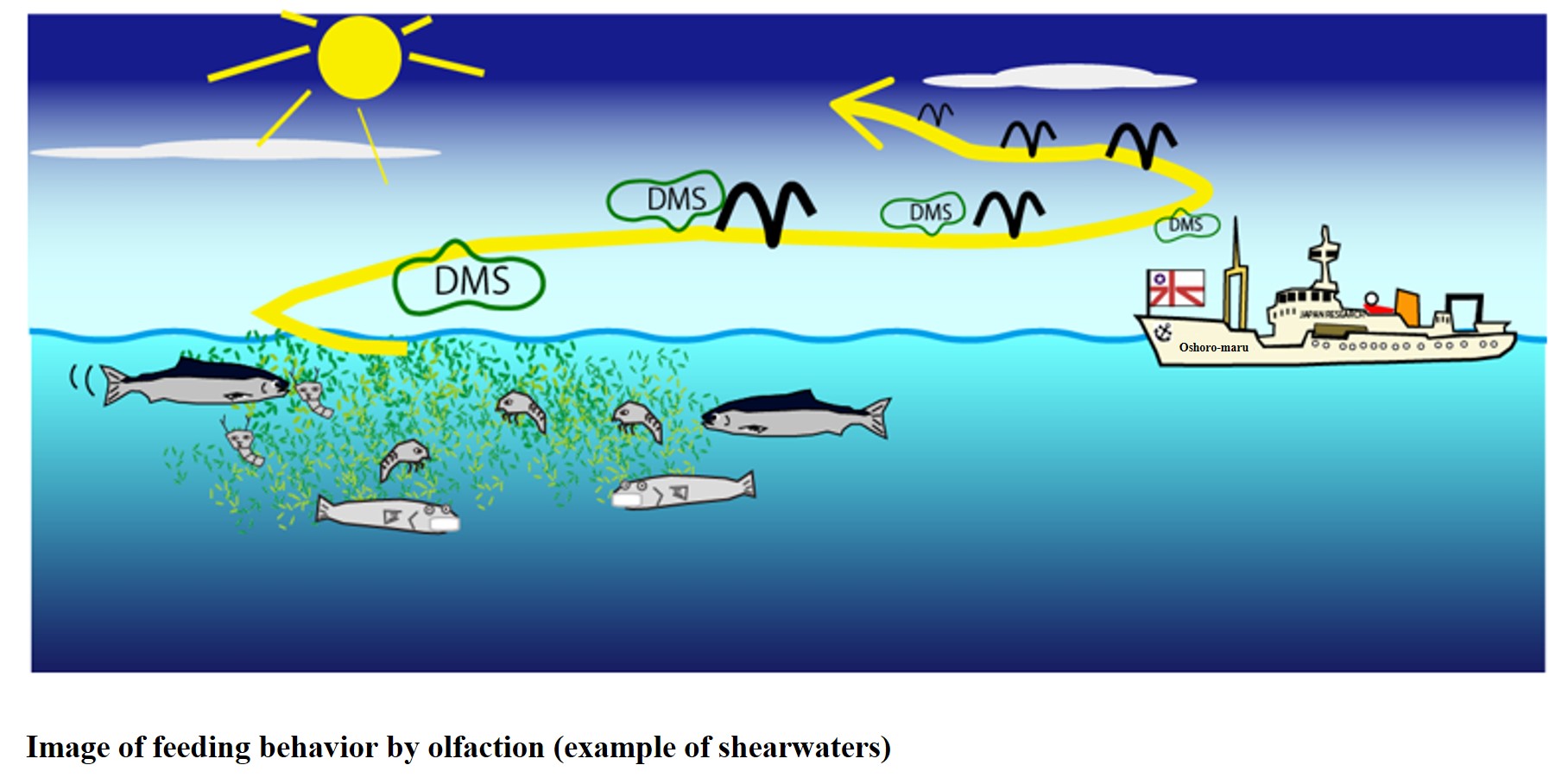Organic Gases in the Ocean (Summary and Supplement)
主題大綱
-
-
Marine plants make organic matter by taking up pro-organic elements such as C, H, O, N, S, Ca, Mg, Si, P, Cl, Br, I, Fe, Mn, Zn, and others contained in seawater. Organic matter plays a central role in the material cycle of the oceans, and is important not only for mass transfer in seawater, but also as a carrier for mass transfer to the atmosphere.
Organic gases serve as carriers from the ocean to the atmosphere. Since they are organic compounds with volatile properties, they are called volatile organic compound (VOC). Since it is a complicated name, we can abbreviate it to VOC or simply call it "organic gas". Organic gases are classified according to the type of components they contain. They include sulfur, halogens, nitrogen, and so on.

-
-
DMS, the main player in organic sulfur gases, and halocarbons of marine origin are the next course of study. Here, we will present a unique study of carbonyl sulfide, a discreet component of marine organic gases, and DMS, the leading player, in marine ecology.
-
What is the most abundant sulfur gas in the atmosphere? Is sulfur dioxide (SO2), which is the most commonly generated? In urban areas, it can reach several parts per million (ppm) in air pollution-causing substances. Dimethyl sulfide (DMS)? If the earth were filled with such gases, it would smell too bad everywhere you went. No, no, it is carbonyl sulfide (COS). It is distributed uniformly throughout the troposphere at 500 ppt.
Note: Even if the amount generated is high, if the rate of disappearance is high, the amount present in the atmosphere will be small. If the amount of the component with a moderate amount of occurrence and a slow rate of disappearance in the atmosphere is large, the amount present in the atmosphere will be large.
-
Even humans can feel "smell bad" organosulfur gas, naturally, other animals can also smell it. This may help seabirds flying over the ocean to find schools of fish. This idea led to a study of "seabirds' olfactory feeding behavior" (Nevitt, 2000).

-
